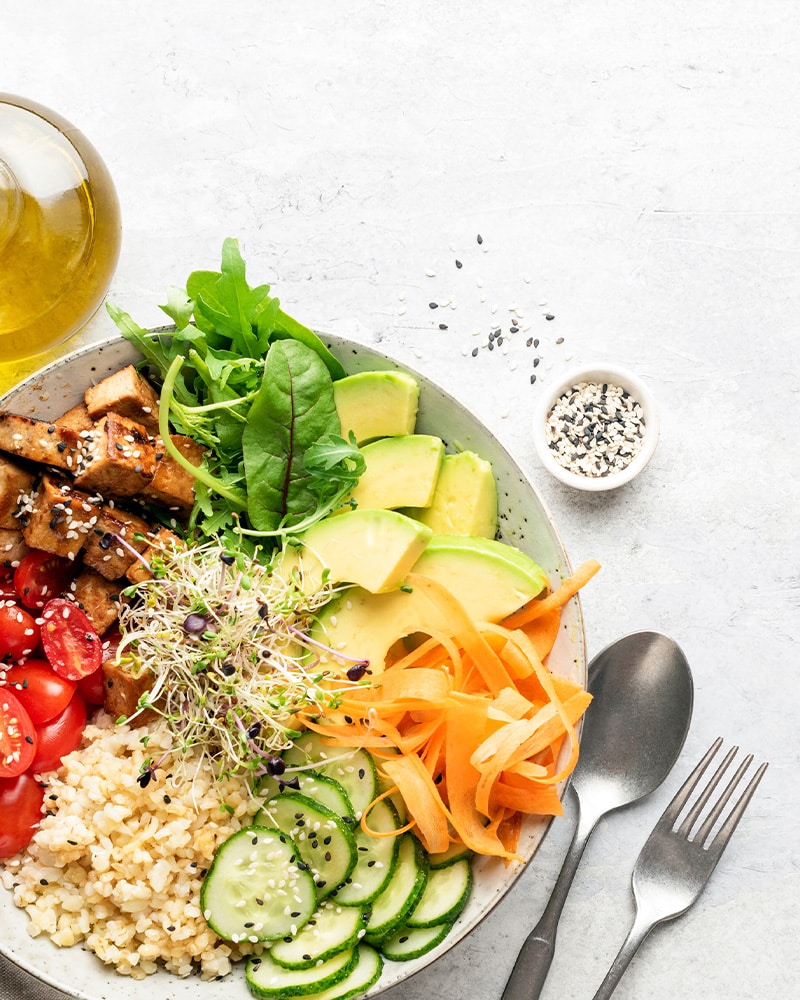
Plant-based diets offer seniors a powerful approach to health, emphasizing natural foods rich in nutrients while reducing animal products. For those considering a shift to vegetarian or vegan eating, the benefits range from improved heart health and lowered inflammation to better weight management and energy levels. With the right approach, transitioning to a plant-based diet can be simple, enjoyable, and tailored to meet the nutritional needs of seniors, providing a fresh perspective on meals that promote well-being.
1. Understanding the Benefits of a Plant-Based Diet for Seniors
Switching to a plant-based diet brings a range of health perks. Many seniors find these diets helpful for heart health, lowering cholesterol, and managing blood pressure. Plant-based foods are rich in fiber, antioxidants, and essential vitamins, reducing inflammation and boosting the immune system. Plus, with options that promote balanced nutrition and fewer processed foods, plant-based eating often aids in weight management.
As a bonus, the environmental impact of plant-based eating also appeals to those looking to make sustainable choices. Plant-based diets generally leave a smaller environmental footprint, adding an extra layer of benefit for those considering the switch.
Also read: Low-Sodium Meal Planning for Seniors: How to Enjoy Flavorful Foods While Managing Hypertension
2. Key Nutrients Seniors Need on a Plant-Based Diet
Transitioning to plant-based doesn’t mean sacrificing nutrition. Key nutrients to focus on include:
- Protein: Beans, lentils, tofu, and tempeh offer ample protein for seniors.
- Calcium: Essential for bone health. Find it in fortified plant milks, almonds, and dark leafy greens.
- Vitamin D: Sun exposure helps, but seniors may also consider fortified products or supplements.
- Vitamin B12: Crucial for nerve health. Typically added to fortified cereals and plant milks or taken as a supplement.
- Omega-3 Fatty Acids: Flaxseeds, chia seeds, walnuts, and algae-based supplements supply omega-3s, which support brain health.
Tip: A balanced approach is key. Adding a variety of foods ensures that all nutrient needs are met without relying on animal products.
3. Tips for Transitioning to a Vegetarian or Vegan Diet
- Start Small: Incorporate a “meatless” day each week, focusing on favorite plant-based meals.
- Explore New Ingredients: Many enjoy adding tofu, tempeh, or legumes, which offer versatility in cooking.
- Seek Out Simple Recipes: Look for familiar meals that are easily adaptable, like pasta with veggie-based sauces or stir-fries loaded with vegetables.
- Don’t Rush: Gradual transitions make it easier to adjust and find favorite new flavors.
Many seniors find joy in trying new recipes and flavors while reaping the health benefits. This approach to meals can be creative and enjoyable, especially with easy-to-follow recipes and a range of ingredients.
4. Sample Plant-Based Meal Ideas for Seniors
Finding satisfying plant-based meals that are easy to prepare makes the transition smoother. Here are a few ideas to try:
- Breakfast: Oatmeal topped with fresh berries, nuts, and a sprinkle of chia seeds.
- Lunch: Hearty salad with mixed greens, chickpeas, roasted vegetables, and a tahini dressing.
- Dinner: Stir-fried tofu with broccoli, bell peppers, and a dash of sesame oil served over brown rice.
- Snacks: A handful of almonds, fresh fruit, or whole-grain crackers with hummus.
Switching up ingredients and meal combinations keeps meals exciting while delivering essential nutrients.
 5. Addressing Common Concerns and Misconceptions
5. Addressing Common Concerns and Misconceptions
Transitioning to a plant-based diet often raises questions. Common concerns include protein intake, cost, and variety. Here’s a breakdown of these concerns with simple answers:
- Protein: Protein needs are met through plant sources like beans, lentils, and nuts.
- Cost: Vegetables, grains, and legumes are often more budget-friendly than meat.
- Variety: Plant-based diets offer an endless variety with countless fruits, vegetables, grains, and protein options.
For those worried about energy or satisfaction, the key is to focus on whole foods. Foods like whole grains, nuts, seeds, and legumes are nutrient-dense, keeping meals both filling and enjoyable.
6. Support and Resources for a Smooth Transition
Going plant-based is easier with the right support and resources. Here are some helpful options:
- Cookbooks: Look for books that focus on easy, senior-friendly plant-based meals.
- Online Recipe Sites: Platforms like Forks Over Knives and Minimalist Baker provide free, easy-to-follow recipes.
- Community Support: Check local senior centers or groups that offer resources or meet-ups focused on plant-based eating.
- Nutritional Guidance: Nutrition-focused resources like the American Heart Association’s website provide additional tips for balanced eating.
Finding resources that inspire and guide the transition makes it easier to stay on track and feel supported.
7. Supporting Plant-Based Nutrition at Avalina SR Living
At Avalina SR Living, we understand the growing interest in plant-based diets among seniors. That’s why our dining services offer nutritious, satisfying vegetarian and vegan meal options tailored to meet the needs of our community members. With fresh ingredients and meals designed to support a balanced lifestyle, we help residents explore new dietary choices with ease and enjoyment. For those interested, our team can provide guidance on making plant-based meals work for individual health needs, ensuring that each resident feels supported in their choices. Avalina SR Living is here to make healthy eating both enjoyable and accessible.




